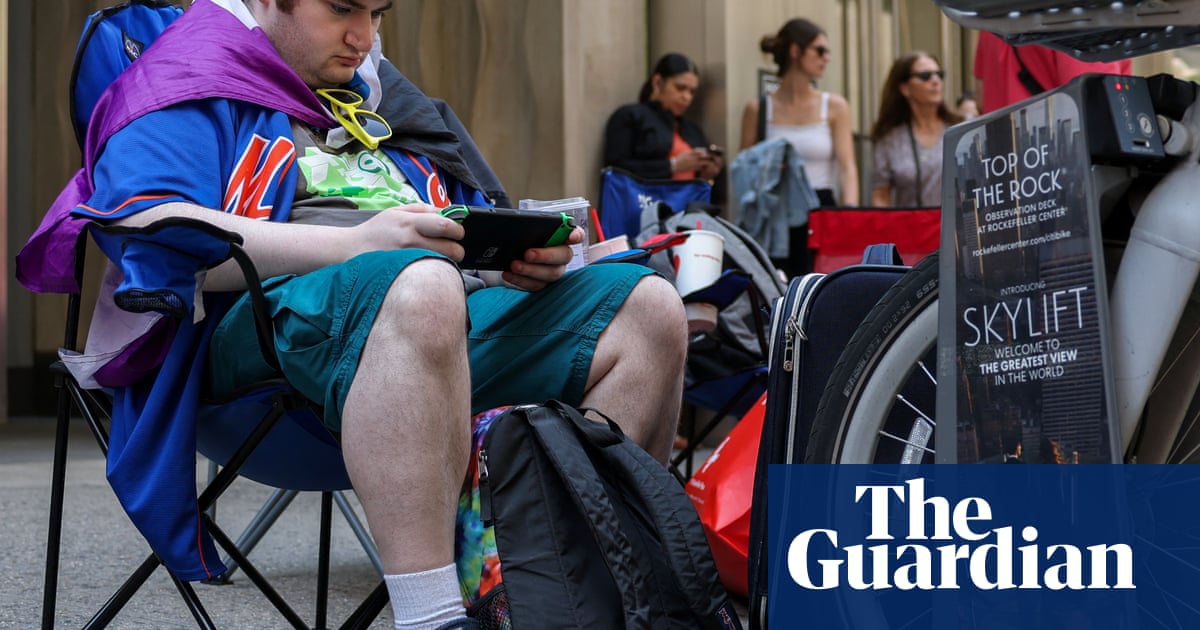Nintendo fans across the US are breathing a sigh of relief as they tear apart the boxes housing their new Nintendo Switch 2 video game consoles. On-again, off-againtrade tariffsimplemented by Donald Trump, which precipitatedpre-order delaysfrom Nintendo, made the 5June release date of the highly coveted hardware feel more like a hope than a certainty. A potential price hike up from $450 loomed over launch day, but would-be buyers’ fears did not come to fruition.
Nintendo’s maneuvering around Trump’s tariffs isn’t over, though – far from it. The Japanese console maker managed to luckily launch its device squarely within a90-day tariff pauseissued by the president. If tariffs on countries like India and Japan return to the levels proposed during Trump’s “Liberation Day” speech at the start of April, however, experts say Nintendo will have to limber up for yet another delicate trade policy dance.
It’s possible that a Switch 2 bought during the holiday season will cost more than it did at launch date. Nintendo’s top gaming hardware competitors – and essentially anyone shipping electronics to the US – have been watching the Switch 2 saga with bated breath.
“What saved Nintendo in this case was that Trump chickened out,”Notre Dame professor and international economist Robert Johnsonsaid.
Since its launch in March 2017, the Switch has become one of the best-selling video game consoles in history, with more than 150m units sold worldwide. Nintendo teased its successor in January and gave a full reveal during an 2 Aprillivestream, announcing the device would ship on 5 June with a hefty $450 price tag in the US (or $500 when bundled with Mario Kart World). Just hours later, Trumpstepped up to a podium at the Rose Garden, chart in tow, to announce a new volley of tariffs on imports on countries with a trade deficit with the US.
Among them: a 24% tariff on Japan, where Nintendo is headquartered, and a 46% tariff on Vietnam, where the bulk of its Switch manufacturing takes place. Stock marketsplummetedas Nintendo fans collectively wondered whether the company would pass the costs of those steep duties on to them.
US pre-orders for the Switch 2 were supposed to begin later that week on 9 April. Nintendo delayed that date so it could “assess the potential impact of tariffs and evolving market conditions”. The 5 June release date, the company noted, would stay the same. Gamersflockedtovarious social media sitesto vent their frustration – much of it directed not at Nintendo, but at the Trump administration. Pre-orders resumed on 24 April and, predictably, the console quickly sold out.
Nintendo did not immediately respond to a request for comment
Johnson notes that Nintendo, like many other consumer electronics makers, has spent years grappling with the question: “Where do I produce?
In 2019, during the tail-end of the first Trump administration, the gaming company began shifting production of the Switch from China to Vietnam in an effort to sidestep US tariffs on Chinese imports. Nintendo still manufactures some Switch products in China, but those units are typically shipped to non-US markets. Other major consumer tech companies, such as Apple, havesimilarly moved parts of their manufacturingoperations from China to countries such as India to mitigate tariff impacts.
That strategy was ultimately rendered moot when the current administration announced a 46% tariff on imports from Vietnam, an unexpected move that Johnson says “caught virtually everyone off guard”. These looming tariffs, and the uncertainty surrounding them, could impact the pricing dynamics of nearly any consumer tech product entering the US.
Sony and Microsoft,both expected to release new consoles in 2027, will likely face similar challenges to Nintendo.
“It takes a long time and significant capital outlays to bring new production facilities online. Producers really like to operate in a stable environment.” Johnson said. “The current trade environment is the exact opposite of that.”
The “Liberation Day” tariffs could easily have led to a higher Switch 2 price or a delayed release. But Nintendo managed to avoid that fate thanks to backpedaling by the Trump administration, a behavior described by the Financial Times using the acronym “taco” – short for “Trump always chickens out”. Trump’s call for a 90-day pause on tariffs to allow negotiations with targeted countries meant the Switch 2 could still be released during a window in which the import taxes wouldn’t apply.
And even if negotiations with Vietnam ultimately fail, reports estimate Nintendo hasalready shipped around 746,000Switch 2 units to the US, which would not be subject to the higher tariffs.
Nintendo consumers will not walk away unscathed by tariffs. The company has said accessories for its device, a major part of the Switch’s dual form factor, will “experience price adjustments”. So far,according to CNBC, docks used to play the Switch on a full-size screen will cost $10 more than before, while straps for the two controllers will see a $1 increase. Johnson also said he wouldn’t be surprised if Nintendo considers raising the console’s price around the holiday season, especially if Trump moves forward with a 46% tariff on Vietnam.
“I find it difficult to imagine that the Trump administration will want thousands of stories written during the holiday season about how Trump ruined Christmas,” Johnson said. “So, I expect they’ll find a way to climb down, but – like everyone else – I’m not sure about that.”
But there’s another reason why Nintendo may have an incentive to keep console prices from climbing too high: themajority of its revenuedoesn’t come from physical console sales. Increasingly, the real moneymakers – for Nintendo and its competitors – are software and online subscriptions, neither of which are subject to tariffs.
“In the end, Nintendo wants to sell consoles to get people to buy games and accessories,” Johnson said. “As a result, it may be willing to hold down the price of consoles.”
